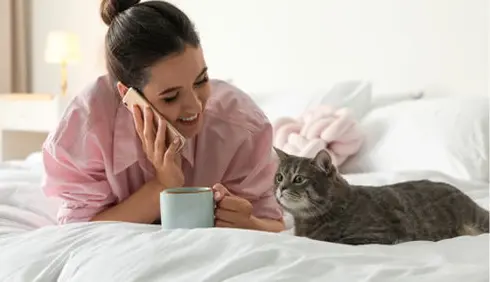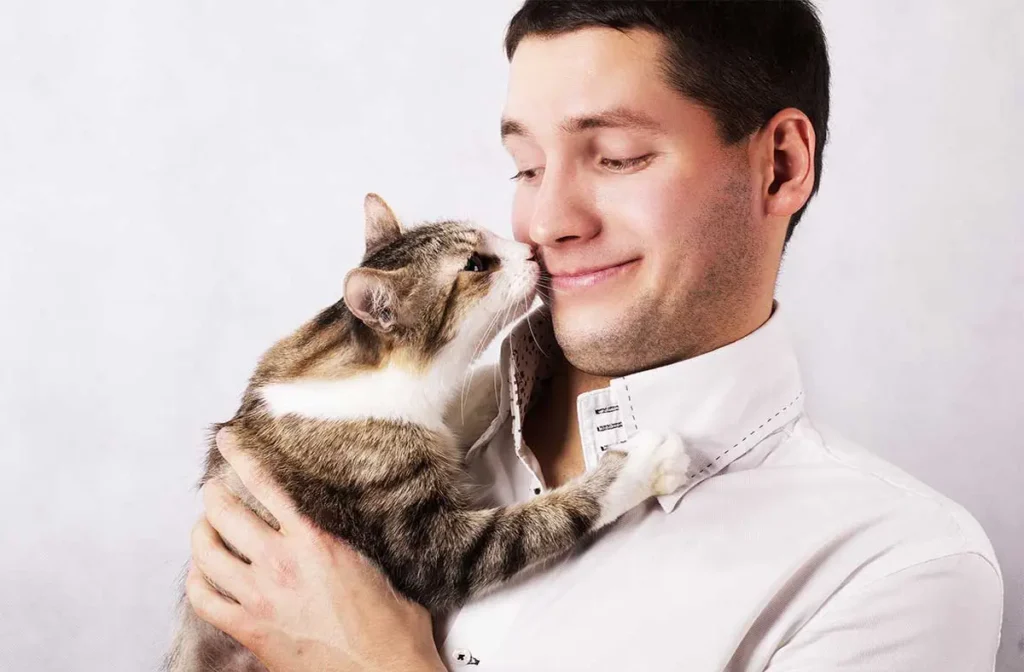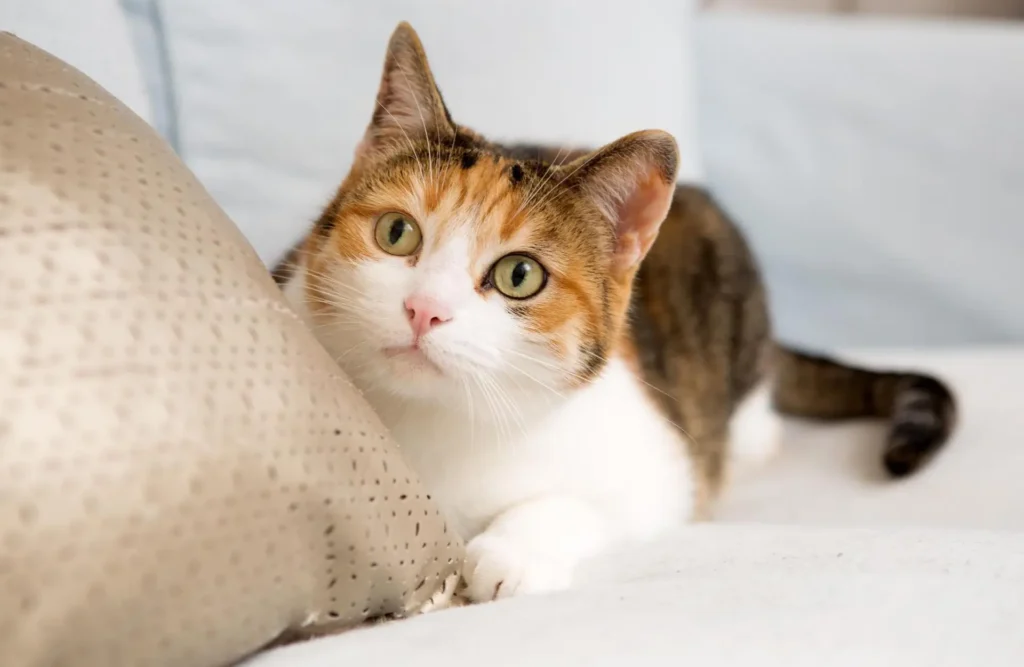How Do Cats Communicate Their Needs to Humans?

Introduction
A. Importance of understanding cat communication
Cats are mysterious creatures, and understanding how they communicate is vital for building strong bonds with them. When we know what our cats are trying to tell us, we can meet their needs better, leading to happier, healthier cats.
B. Brief overview of how cats communicate
Cats use a variety of methods to communicate, including body language, vocalizations, and scent marking. They may purr when content, meow for attention, or use their tails to show their mood. Understanding these cues helps us interpret what our feline friends are feeling.
C. Purpose of the article: exploring how cats communicate their needs to humans
In this article, we’ll delve deeper into the ways cats express their needs to us. By learning about their communication methods, we can become better pet parents, ensuring our cats feel understood and cared for. Let’s explore the fascinating world of cat communication together.

Vocalization
A. Types of vocalizations cats use
Cats use various sounds to communicate with humans, including meowing, purring, hissing, and chirping. Each type of vocalization has its own meaning and purpose.
- Meowing: This is perhaps the most common way cats communicate with humans. They may meow to get attention, express hunger, or greet their owners.
- Purring: Cats often purr when they’re content, such as when being petted or cuddled. However, they may also purr when they’re in pain or feeling anxious, using it as a self-soothing mechanism.
- Hissing: Cats hiss when they feel afraid or aggressive. They may hiss when they feel threatened or cornered, warning potential aggressors to stay away.
- Chirping: This cute sound is usually associated with excitement or anticipation. Cats may chirp when they see birds outside a window or when they’re about to play with a toy.
B. Meaning behind different vocalizations
Understanding the meaning behind a cat’s vocalizations can help us respond appropriately to their needs.
- Meowing for attention or food: When a cat meows, they may be asking for attention, food, or even just wanting to communicate with their human companions.
- Purring as a sign of contentment or seeking comfort: Cats purr when they’re happy and content, but they may also purr when they’re feeling scared or unwell, seeking comfort from their owners.
- Hissing to express fear or aggression: Hissing is a warning sign that a cat feels threatened or defensive. It’s their way of saying, “Back off!” to potential threats.
- Chirping to communicate excitement or anticipation: Cats chirp when they’re excited about something, like seeing prey or anticipating playtime. It’s a cute way for them to express their enthusiasm.

Body Language
A. Postures and gestures cats use to communicate
Cats utilize their bodies to express a broad spectrum of feelings and intentions. Paying attention to their body language can help us understand what they’re trying to communicate.
- Tail positioning: The position of a cat’s tail can indicate their mood. A tail held high typically means they’re confident or happy, while a low or tucked tail may suggest fear or submission.
- Ear positioning: Cats move their ears to express their emotions. Flattened ears often signal fear or aggression, while forward-facing ears indicate curiosity or alertness.
- Eye contact: Cats use eye contact to communicate with humans and other animals. Direct eye contact can signal aggression, while slow blinking is a sign of trust and affection.
- Body stance: The way a cat holds its body can reveal a lot about how it’s feeling. A relaxed, upright stance suggests contentment, while a crouched posture may indicate readiness to play or submission.
B. Interpretation of common body language signals
Understanding what different body language signals mean can help us respond appropriately to our cats’ needs and emotions.
- Tail held high indicating confidence or happiness: When a cat holds its tail high, it’s usually feeling confident and content. This is often seen when they’re greeting their owners or exploring their territory.
- Ears flattened indicating fear or aggression: Flattened ears are a sign that a cat is feeling threatened or defensive. They may flatten their ears against their head when encountering something scary or when they’re about to attack.
- Dilated pupils signaling excitement or stress: Dilated pupils can indicate that a cat is either excited or stressed. For example, they may dilate their pupils when they’re about to pounce on a toy or when they’re feeling anxious.
- Crouching posture signaling submission or readiness to play: When a cat crouches low to the ground, it may be signaling submission to a more dominant cat or readiness to engage in play. This posture is often seen during playful interactions with other cats or humans.
Scent Communication
A. Importance of scent marking in cat communication
Cats use scent to communicate with each other and with humans. They leave scent marks through various methods to convey messages and establish their presence.
- Urine marking: Cats may spray urine to mark their territory or communicate with other cats. This helps them establish boundaries and assert dominance in their environment.
- Facial marking: Cats have scent glands on their cheeks and around their mouth. When they rub their face against objects or people, they’re leaving their scent as a way of marking territory or expressing affection.
- Rubbing against objects: Cats also rub their bodies against objects to leave their scent behind. This behavior not only marks territory but also helps them feel more secure in their environment.
B. Understanding the messages conveyed through scent
Interpreting the messages behind scent marking can help us better understand our cats’ needs and behaviors.
- Marking territory boundaries: Cats use scent marking to define their territory and communicate with other cats about ownership of space. This helps reduce conflicts and establish boundaries.
- Establishing social hierarchy: Scent marking plays a crucial role in establishing social hierarchies among cats. By leaving their scent in different areas, cats assert their dominance or submission within a group.
- Providing comfort and familiarity: Scent marking also helps cats feel more comfortable and secure in their environment. The familiar scents of their marking or those of their owners can provide reassurance and reduce stress.
Behavioral Cues
A. Behaviors cats exhibit to express their needs
Cats use a variety of behaviors to communicate with humans, indicating their needs and desires.
- Kneading: Cats often knead with their paws, pressing them into soft surfaces like blankets or laps. This behavior is reminiscent of kneading milk from their mother’s mammary glands and is a sign of comfort and contentment.
- Headbutting: Cats may gently bump their heads against their owners or other objects as a sign of affection and bonding. This behavior, known as headbutting or “head bunting,” is a way for cats to exchange scents and mark their territory.
- Bringing gifts: Cats may bring their owners “gifts” in the form of dead animals, such as mice or birds. While this behavior may seem strange to humans, it’s a display of trust and a desire for interaction, as cats view their owners as part of their social group.
- Scratching: Cats scratch surfaces to mark their territory, sharpen their claws, and stretch their muscles. Providing appropriate scratching posts can redirect this behavior and prevent damage to furniture.
B. Interpreting these behaviors in the context of human-cat interaction
Understanding the meaning behind these behaviors can help us better respond to our cats’ needs and strengthen our bond with them.
- Kneading as a sign of relaxation or seeking attention: When a cat kneads, it’s a sign that they’re feeling relaxed and content. It can also be a way for them to seek attention and affection from their owners.
- Headbutting as a form of bonding or affection: Headbutting is a gesture of trust and affection in cats. By sharing scents through headbutting, cats strengthen their bond with their owners and mark them as part of their territory.
- Bringing gifts as a display of trust or desire for interaction: When a cat brings their owner a “gift,” it’s a sign of trust and a desire for social interaction. While it may not be the most pleasant behavior for humans, it’s an expression of the cat’s affection and regard for their owner.
- Scratching as a means of marking territory or maintaining claws: Cats scratch to mark their territory with scent glands in their paws and to keep their claws healthy and sharp. Providing appropriate scratching surfaces helps fulfill these needs while protecting furniture.
Conclusion
A. Recap of the various ways cats communicate their needs to humans
Throughout this exploration, we’ve learned that cats communicate through vocalizations, body language, scent, and behavior. They meow, purr, use body postures, scent mark, and exhibit various behaviors to express their needs and desires.
B. Importance of paying attention to and understanding these signals for better human-cat relationships
Paying attention to and understanding these signals is crucial for fostering strong bonds between humans and cats. By recognizing and responding to our cats’ communication, we can meet their needs, strengthen our relationship with them, and create a harmonious living environment.
C. Encouragement for further exploration into cat behavior and communication
Exploring cat behavior and communication is a fascinating journey that can deepen our understanding of these enigmatic creatures. By continuing to learn and observe our cats’ behaviors, we can enhance our connection with them and provide the best possible care and companionship.
People also ask
How is my cat communicating with me?
Your cat communicates through meowing, body language, and behavior.
How do cats say hello to humans?
Cats may say hello by rubbing against you or purring.
How does a cat communicate with humans?
Cats communicate with humans through vocalizations, body language, and behavior cues.
How do cats connect with humans?
Cats connect with humans through bonding behaviors like headbutting and bringing gifts.
Do cats know when you talk nice to them?
Cats may respond positively to gentle and soothing tones from humans.
Do cats like when people talk to them?
Some cats enjoy human conversation, finding it comforting and reassuring.



